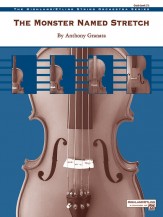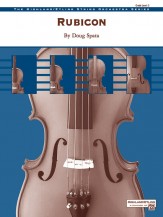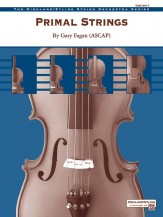“Primal” Strings: Orchestra Teaching Pieces Monday, November 11, 2019
 recommended by Dan C. and Megan W., Orchestra Specialists
recommended by Dan C. and Megan W., Orchestra Specialists
The Monster Named Stretch by Anthony Granata, Grade 2.5
Written in the eerie key of F-sharp natural minor that attracts young students, this sound defines our scary monster called “Stretch.” Each section gets important melodic and countermelodic material. With two separate sections (slow and fast), a legato middle section, a jaunty pizzicato section, and a forceful coda, every section will be challenging. The work features simple rhythm patterns to make it more accessible and allow the student to focus on the three sharps.
TEACH • stretched left hand positions, tremolos, cello/bass shifting
ORCHESTRATION • everyone gets to dig into this monster!
PERFORMANCE • use it to teach extensions – and for Halloween!
 Rubicon by Doug Spata, Grade 3
Rubicon by Doug Spata, Grade 3
Written to help students understand the concept of positions, this entire piece can be played by the violins, violas, and cellos in 3rd position with no shifting! Playing in positions is often a challenging hurdle for many young musicians yet an important prerequisite for advanced techniques. The rhythms are kept very simple so students can focus on playing in a new way. With a dark, mature sound and named after an ancient Roman border river, this piece allows plenty of room for expression. To “cross the Rubicon” is to pass a point of no return and enter into a new realm. This work is both a valuable teaching tool for a new musical adventure and a thrilling concert piece that students will be excited to show off in concert.
TEACH • Violin/Viola/Cello stay in 3rd Position, cut time, G minor
ORCHESTRATION • everyone has plenty to think about and do
PERFORMANCE • dark, mature sound for great concert fodder
 Primal Strings by Gary Fagan, Grade 3
Primal Strings by Gary Fagan, Grade 3
The word primal is defined as “relating to an early stage in development” or “basic, fundamental, essential, elemental.” Imagine this tune challenging your players who fit that definition. Many young and developing musicians experience difficulty with mastering rhythmic accuracy with confidence. Yet, rhythm is essential to music performance. Student proficiency in reading rhythmic figures and being able to move comfortably from one meter to another should be a goal of the orchestra director. This work provides rhythmic challenges and uses multiple meter changes to create interesting, appealing, and unique rhythmic textures.
TEACH • changing meters, layering rhythms, “modern” harmony
ORCHESTRATION • lots of interesting movement in all parts
PERFORMANCE • reminiscent of a 60s action TV show theme
Find more teaching literature on our website, or contact us for more information. Shop Stanton’s for all your sheet music needs!
About the Authors:
Dan C. has worked at Stanton’s since 1979, primarily with orchestra music and print promotions. A “working” musician, he’s a classical cellist, a rock & jazz bassist and a folk & country guitarist/singer. His free time is spent with family or reading, gardening, cycling and working puzzles. His series of musical puzzles (RP3 Rebus Puzzle Picture People) can be found on the Stanton’s Facebook page each Sunday. He also has a reputation as a pretty good joke teller, and is recently retired – congrats, Dan!
Megan W., originally from Pittsburgh PA, is happy to call Columbus and Stanton’s Sheet Music “Home.” As a musician, Megan has played in marching and concert bands, youth orchestras, full orchestras, small ensembles, and a few choirs. Her interests include fiddling, reading, writing, martial arts and yoga.